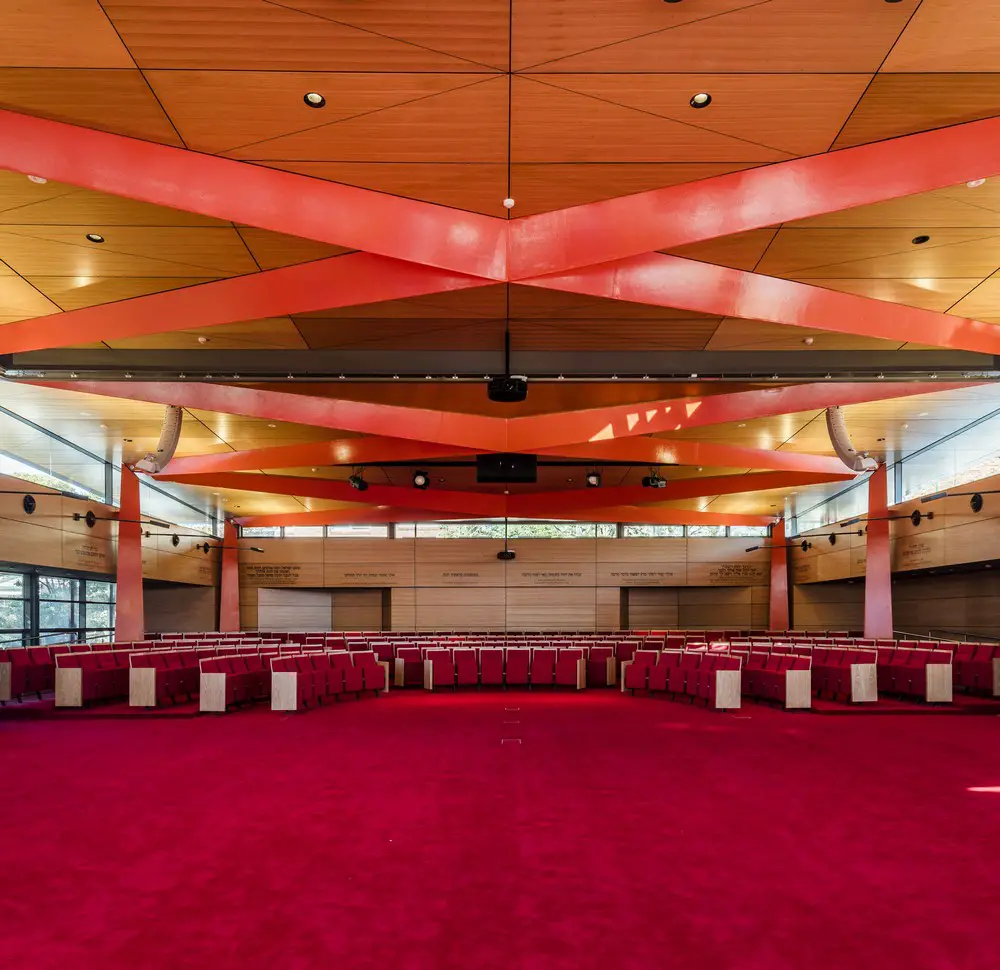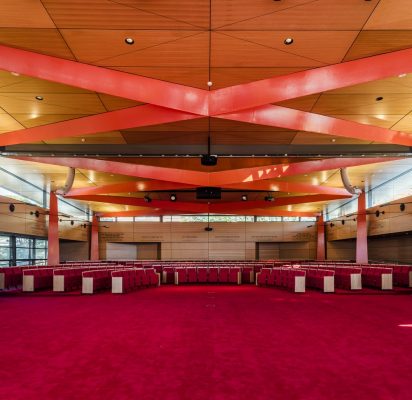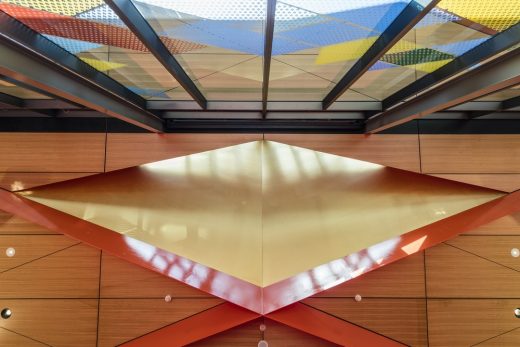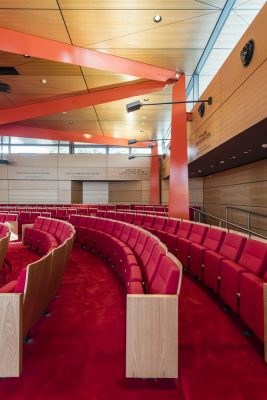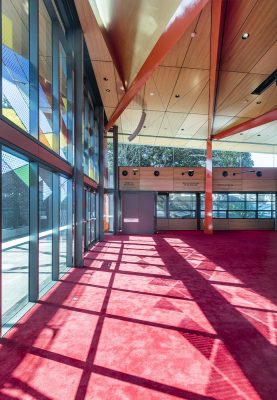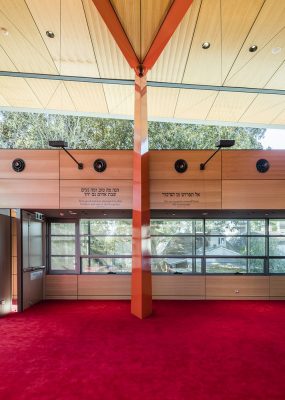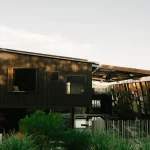Emanuel Synagogue in Woollahra, NSW Place of Worship, Australian Interior, Images
New Emanuel Synagogue in Woollahra
New South Wales Place of Worship Building Development design by Lippmann Partnership
30 Jun 2018
Emanuel Synagogue Sydney Shortlisted at World Architecture Festival 2018 Awards
Emanuel Synagogue, Sydney is one of 536 shortlisted entries across 81 countries:
World Architecture Festival Awards 2018 Shortlist
23 May 2018
New Emanuel Synagogue
Architects: Lippmann Partnership
Location: Woollahra, NSW, Australia
New Emanuel Synagogue
This place of worship is a progressive architectural statement for a progressive religious community.
Architectural legacy
The Emanuel campus includes a heritage listed Synagogue completed in 1941 which accommodates 1200 worshippers. A second Sanctuary designed by Aaron Bolot was completed in the 1960’s and seats 250. These buildings constitute a significant legacy of Australian modernist architecture.
A progressive & growing community
Since its origin in the twentieth century, the Emanuel Synagogue in Sydney has embraced reform practices within the Jewish tradition. In the twenty first century, Emanuel Synagogue has supported the equal role of women in lay and rabbinic leadership, has worked extensively in areas of social justice, animal rights and environmental protection. Australia’s first same gender religious wedding took place in 2018 on the Emanuel campus.
The congregation embraces religious pluralism offering a variety of different services and streams. It is the fastest growing religious congregation in the southern hemisphere and has grown dramatically to over 3,500 congregants.
A new open sanctuary
In 2011 the Emanuel board resolved to build a third sanctuary for 700 congregants as well as a pre-School for 60 children in the southern wing of its existing campus. The new development was considered a once in a generation opportunity and was fully funded by donations from its members.
The new pavilion is designed to serve the community as both a cultural centre and place of worship. The space is equipped to allow the sanctuary space to be adapted from religious services to concerts, performances, films and social functions and to serve not only the Emanuel congregation but also the wider local community.
An acoustically treated operable wall allows the interior to be subdivided for small intimate functions of 270 seats up to larger seating configurations of 700 people. A high standard of acoustic treatment and audio reinforcement provides the adaptability of the space for these differing requirements.
A forecourt between old and the new Synagogues
Addressing the old forecourt from the street, the existing timber lined foyer of the old Synagogue remains the primary ceremonial entry to the campus.
Extending from the south end of the old foyer, a new glass wall and lift invites access to the new wing. Natural light and views to a landscaped garden are shared with the pre-School at ground level. The pre-School studios extend to outdoor play areas forming a breezeway, shaded from the sun but offering access to the outdoor landscaped recreation space.
Ascending from the old foyer, one reaches the elevated new Sanctuary by first passing through the Kiddush Court, an outdoor room and transition space between old and new Synagogues. This courtyard space allows both buildings to maintain their independent identities whilst providing a place for people to congregate and celebrate religious festivals.
The courtyard is protected from rain by a diagrid steel structure roofed with glass. It is bounded by the facade of the old Synagogue including exposed heritage fabric and the new sanctuary building. Within this new courtyard, the old and new buildings talk to one another.
Respect and warmth
Whilst the new building respects its older neighbours it was intended to express itself exuberantly and independently. The old sanctuaries are of masonry construction, the new structure is a steel, glass and plywood pavilion. The striking colour of the new structure makes reference to the terracotta brickwork of the adjacent heritage building.
The new pavilion’s increased sustainability performance is achieved by the introduction of water detention/recycling, natural ventilation, natural lighting and the use of recyclable materials. Natural light and ventilation is fundamental to the design although combined with led lighting and mechanical ventilation, provides optimum comfort levels and a sense of luxury.
The internal plywood linings, rich interior finishes and colour imbue the space with an ambience which is warm and welcoming, befitting its use as a place of religious worship.
Biblical References
The orientation and dimensions of the new sanctuary are based on specific ancient biblical references, reinterpreted to respond to contemporary conditions. Custom made joinery, designed specifically for the new sanctuary, utilise Acacia timber veneers for the reader’s desk and ark in accordance with these specifications.
Abstract religious artwork is integrated with the fabric of the architecture. It reflects the triangular geometry and Star of David motifs. The western glass screen providing privacy from neighbours is a depiction of the “parting of the seas” whilst the northern glass wall represents “the seven species”. These artworks express the narrative of salvation from bondage and redemption to the promised land.
Sustainability
The new pavilion’s sustainability performance is achieved by the introduction of water detention/recycling, natural ventilation, natural lighting and the use of recyclable materials. Natural light and ventilation is fundamental to the design although combined with led lighting and mechanical ventilation, provides optimum comfort levels and a sense of luxury.
Overhangs in Sydney’s sunny climate give protection to the extensive glass from the hot sun throughout the year. Extensive patterns on the glass will further filter light and eliminate glare inside as a modern version of sun control. The open weave of the goats’ hair in the ancient tent performed a similar function, indeed the Old Testament image of the universe was of two such tent cloths, the stars being the rays of light shining through.
The black tent is an ingenious and remarkably adaptable, functional shelter. Its roof and walls could speedily adapted to the wind and changes in weather. In a similar way, the new Emanuel Synagogue borrows and applies similar lessons in taking advantage of natural ventilation to reduce energy use.
A modern VRV system of air conditioning has been installed to ensure the temperature inside stays within the range of 21-24°C throughout the year. The Sanctuary is designed as a naturally ventilated so it is not dependent on air conditioning which is provided, but should not be needed. A bulkhead above door head height hides the ducting and separates the glass walls from the upper highlight which runs around the perimeter.
New Emanuel Synagogue, Woollahra – Building Information
Client: Emanuel Synagogue Congregation
Architect: Ed Lippmann, Lippmann Partnership (LP)
LP Team
Felipe Torres, Project Architect
Tim O’Sullivan, Architect
Simon Lea, Architect
Brad Sorensen, Architect
Vivian Liu, Architect
Fuat Sezgin, Architectural Assistant
Catherine Jia, Architectural Assistant
Size: 1,700 sqm
Budget: 9M AUD
Location: 7 Ocean Street, Woollahra, NSW 2015
Builder: Belmadar
Subcontractors
Steel: Apollo Fabrications
Façade: AJ Aluminium
TimbeR: Supawood
Finishes
Glass: glass viridian low e glass with Pixagraphic laminated by viridian
Steel painting: p07f9 orange wood gloss finish and Malay grey pg2c6 by Dulux
Timber ceiling and wall cladding: clear satin 2‐pac polyurethane on Tasmanian Oak natural timber veneer with wet seal and matching edges by Supawood
External wall cladding: Exo Tec cfc cladding by James Hardie
Roofing: custom orb and Spandek by Lysaght shale grey finish
Eastern screen: aluminium expanded screen panels by Locker Group
Door hardware: Assa Abloy
TGSI: TI series indicator studs stainless steel with black contrast insert by Latham Australia
Bathroom fixtures: Caroma
DDA bathroom fixtures: JD Macdonald
Terrazzo partitions: colour mt12 by Terrazzo Australia marble
Sinks to laundry, childcare and kitchen: Franke bow 400 inset
Stainless d pulls: Madinoz Australia
Linear grated drain: Stormtech
Consultants:
Certifier: Group DLA
Landscape: Arcadia and Space Landscape Design
Structural: Taylor Thomson Whitting
Civil: Taylor Thomson Whitting
Façade: Taylor Thomson Whitting
Electrical: Engineering Partners
Hydraulic: Liquid Hydraulic
Lighting: Light Practice
Audio Visual: The P.A. People
Photography: Willem Rethmeier
New Emanuel Synagogue in Woollahra images / information received 230518
Location: Woollahra, NSW, Australia
New Architecture in Sydney
Contemporary Sydney Buildings
Sydney Architecture Designs – chronological list
Sydney Architecture Walking Tours by e-architect
Rozelle Mixed Use Development – Balmain Leagues Club
Architects: Scott Carver
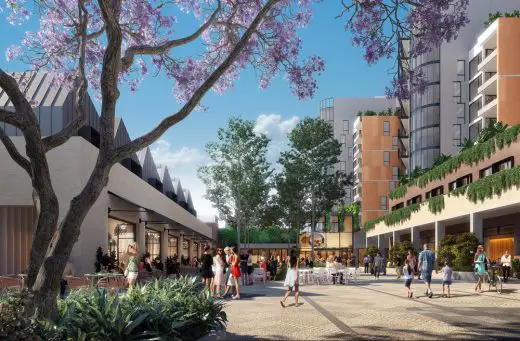
image © Scott Carver
Rozelle Mixed Use Development
Harbord Diggers Redevelopment
Architects: architectus, CHROFI and JMD design
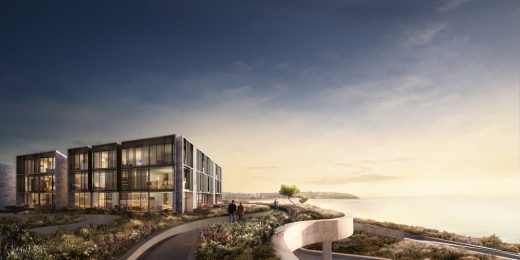
image © Bloom Images
Harbord Diggers Club Redevelopment
Architects: anthrosite
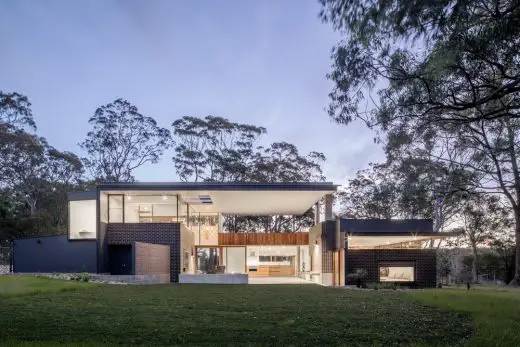
photo : Jon Reid
Contemporary House in Newcastle, NSW
Kensington Street, former Carlton & United Breweries site, Chippendale
Landscape Architects: Turf Design Studio
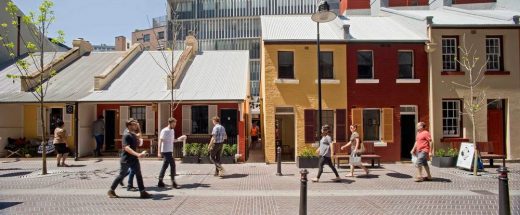
photo : Simon Wood
Kensington Street Development
Comments / photos for the New Emanuel Synagogue in Woollahra page welcome

